NatureZen: Love Nests
words and photos by Melissa McMasters
A silly joke I used to make in my pre-birding life was that on particularly wind-blown days, my hair looked like it had been constructed by the Avian Homebuilders’ Association. (I know, I know…I won’t quit my day job.) Little did I realize just how much work birds actually put into constructing their nests, which come in all sorts of shapes, sizes, and materials. Nesting season has already started for some birds (like raptors), and it will be here before we know it for songbirds. Let’s take a peek at what nursery decoration looks like for the birds.
Cup Nests
Cups are the nest shape most of us are probably most familiar with. In general, they’re built from sturdier materials like sticks, bark, grasses, and stems, held together with binders like spiderwebs, and lined with soft materials like downy feathers, fluffy seeds, and animal fur. This Acadian flycatcher has ornamented its nest-in-progress with strands of oak pollen.
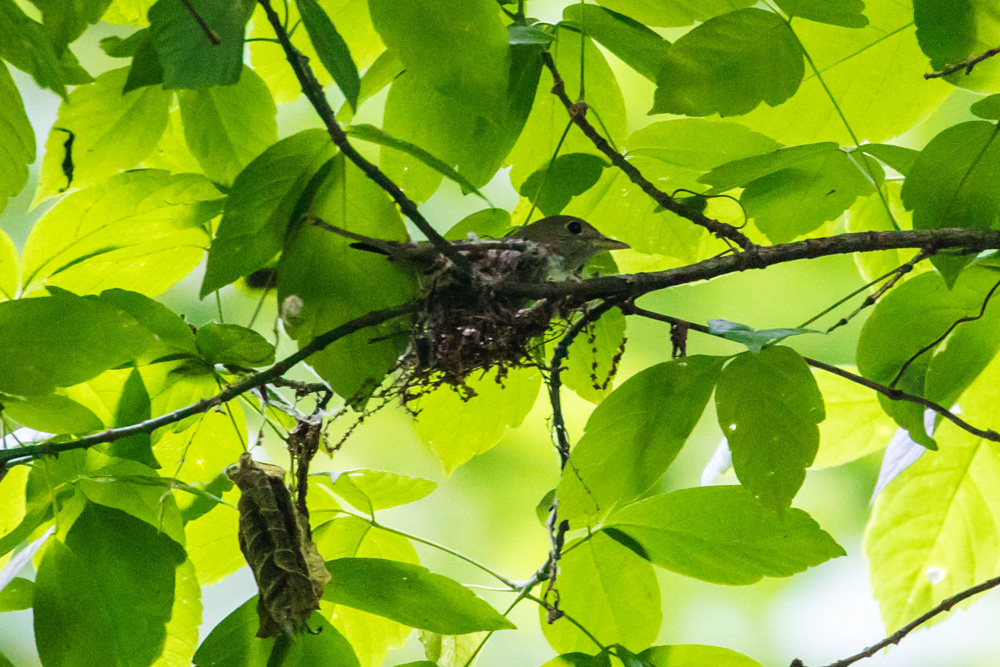
Many birds, like this Anna’s hummingbird and the blue-gray gnatcatcher, affix lichen and mosses to their nest exteriors in order to camouflage them from predators.
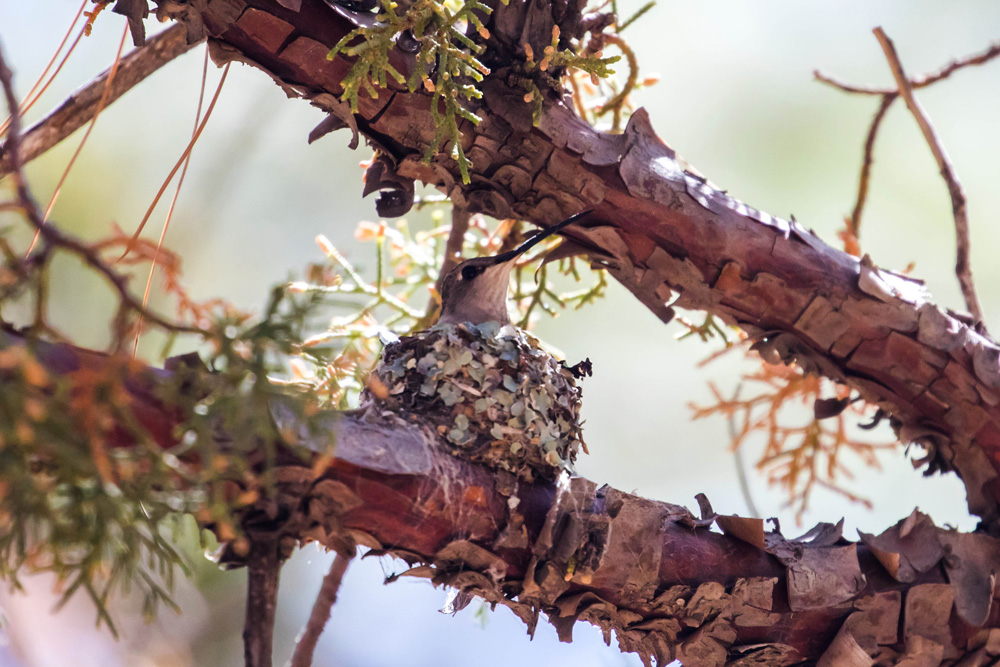
Cups can be built on manmade structures as well as in trees; swallows are familiar presences on porches, bridges, and garages. Many of them, like these barn swallows, make their nests out of mud and dried grasses and line the insides with feathers to make a soft bed. (I’m sure their children are more grateful than they look in this photo.)
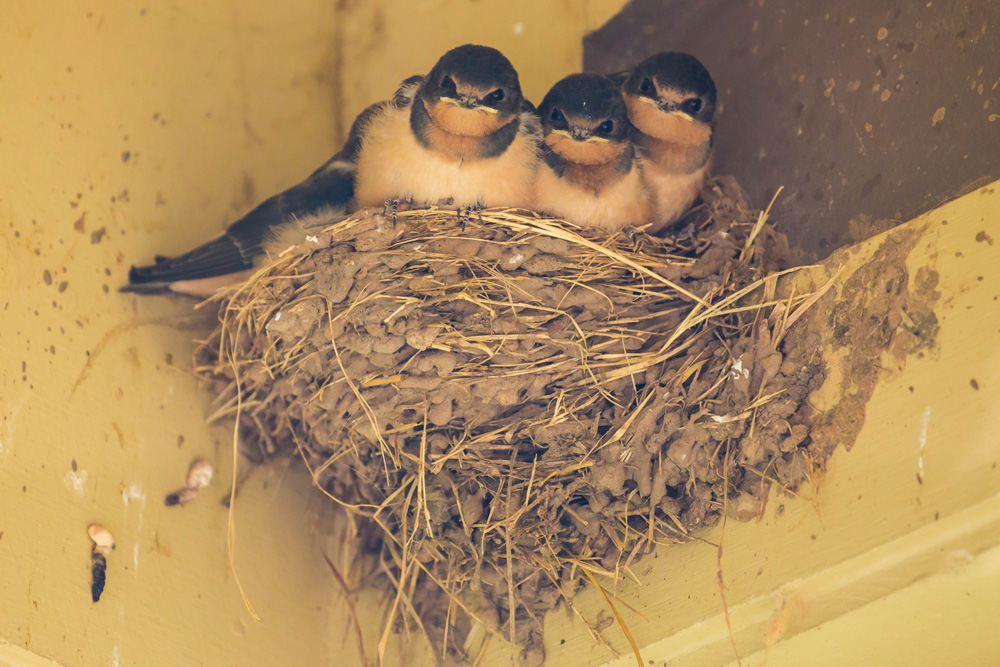
Sphere Nests
This nest type takes a cup and turns it 90 degrees, giving it a side instead of a top entrance. The nest of this pied water-tyrant is suspended from a branch that’s hanging low over a small stream. You can see the fluffy feather lining spilling out, as well as what looks like a dried flower petal.
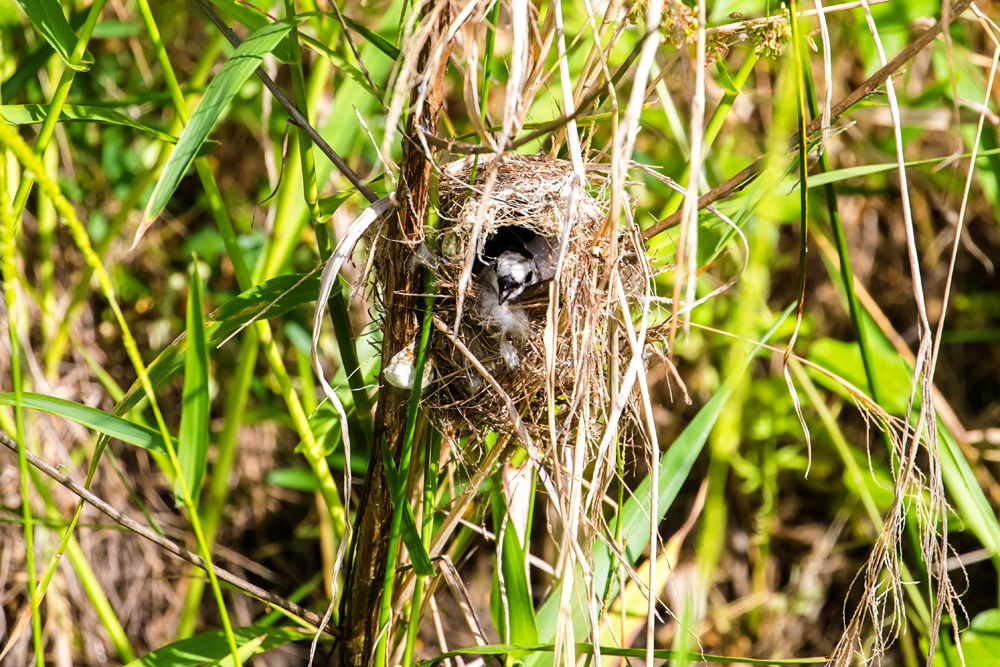
Pendant Nests
For a cup-type nest that’s extra fancy, we look to the blackbirds. Like other orioles, Bullock’s orioles weave gourd-shaped nests from grasses, wool, twine, or hair and suspend them from thinner branches of large trees (which helps to discourage predators like snakes). It can take two weeks for the pair to finish these intricate nests, sometimes with one partner building the inside and the other on the outside.
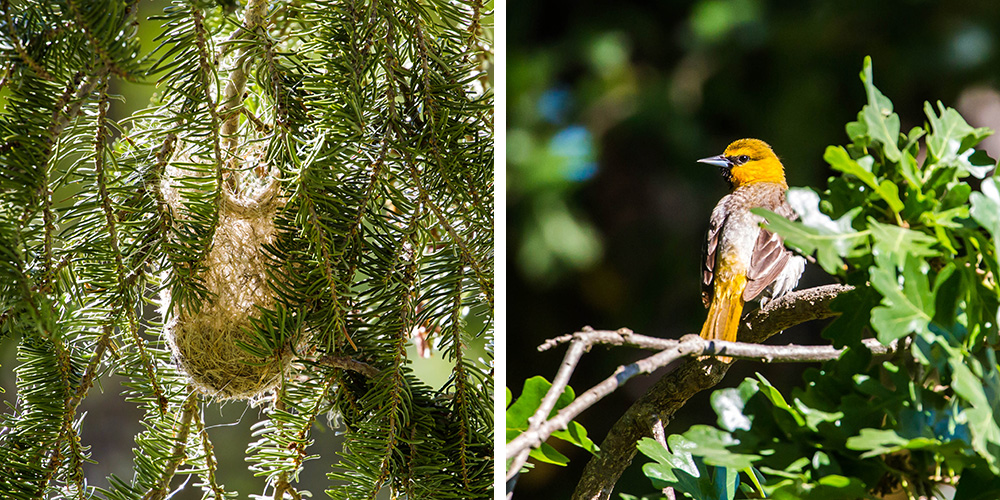
Chestnut-headed oropendola nests often appear in groups, because these birds live in colonies, usually with around five times as many females as males. (Males are much larger and take almost twice as long to fledge, so their survival rate is much lower.) They build nests that are two to three feet long, sometimes choosing locations near bee and wasp colonies to gain some protection against the botflies that parasitize the nests. Fun fact: they also make one of the greatest noises of any bird. (Yes, I am presenting that as a fact.)
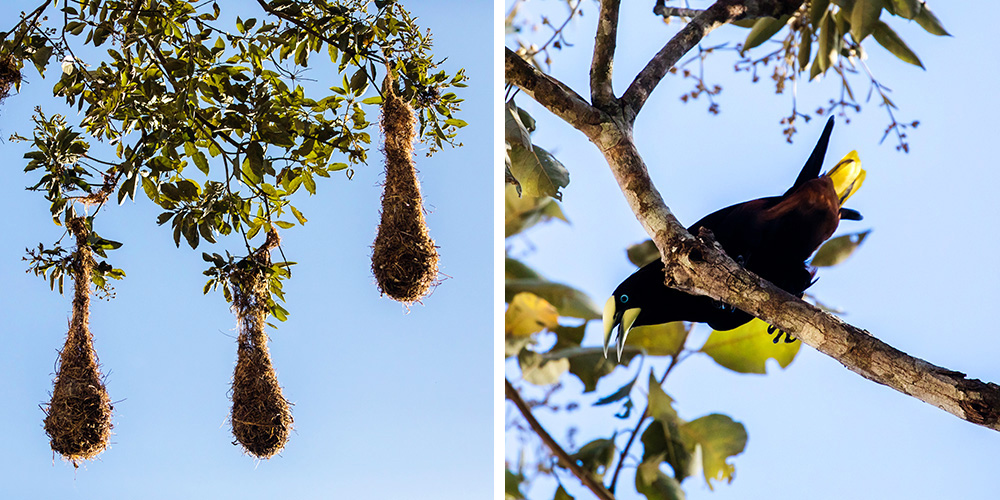
Cavity Nests
While I’ve never seen pendant-type nests anywhere close to home, our area has plenty of cavity-nesting birds. Pileated woodpeckers can take more than a month to excavate a cavity in a dead tree, with males doing most of the work. No soft lining for this crowd; they usually just use wood chips that were created during the construction process. While they don’t generally re-use nests for a second year, plenty of other creatures are happy to take over: wood ducks, Eastern screech-owls, raccoons, and bats all move into the abandoned cavities.
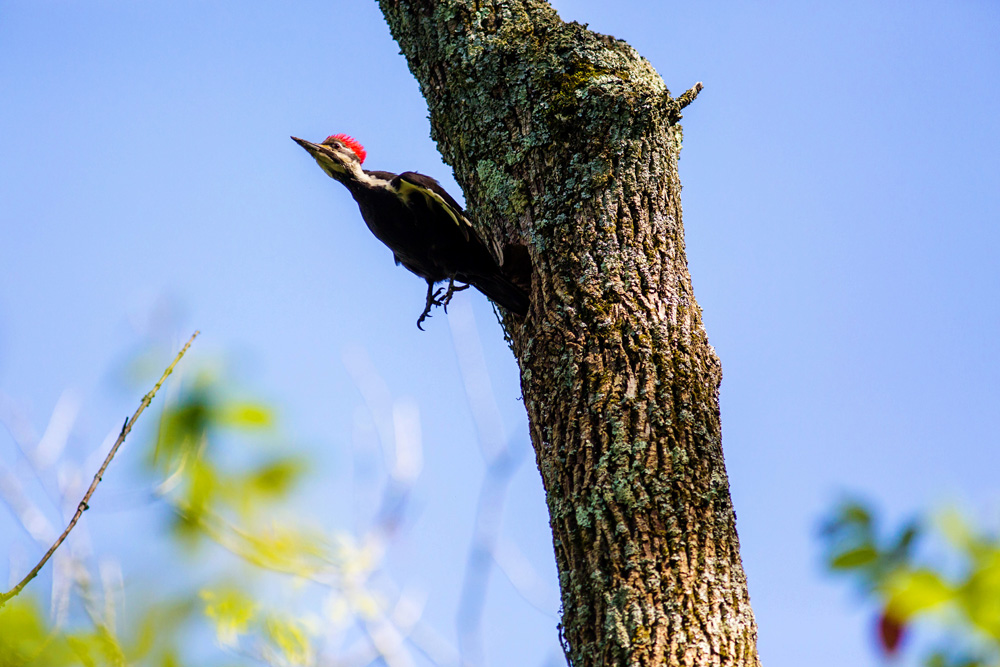
Humans also lend a hand to cavity nesters; if you’ve ever put up a bluebird box or a purple martin house, you’re building a home for a cavity nester. In the Eastern United States, purple martins have almost exclusively used manmade nest boxes for the past century. House sparrows and European starlings (both non-native in the U.S.) can out-compete martins for these homes, so if you can keep the entrances closed until martins arrive in early spring, you’re giving them a better chance.
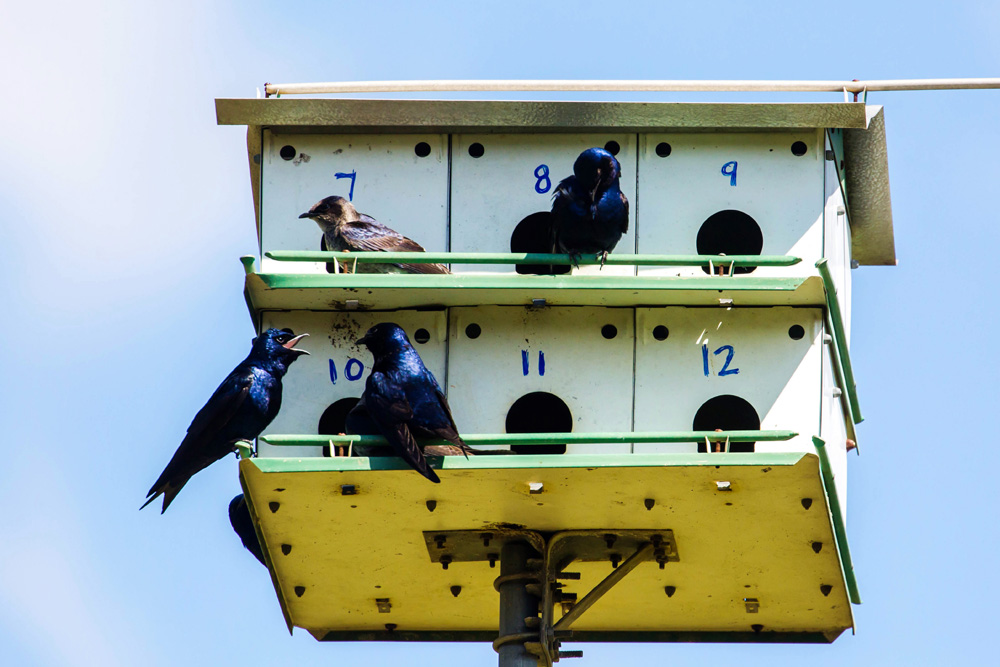
Platform Nests
Some birds are content with using mainly sticks for a nest, as in the case of this red-shouldered hawk that was constructing its nest in the park last week. These hawks build a platform about two feet in diameter that they may spruce up in successive years and re-use. They’ll generally choose a spot in the main trunk of a tall tree, far off the ground but not all the way at the top, a box this sycamore checks perfectly.
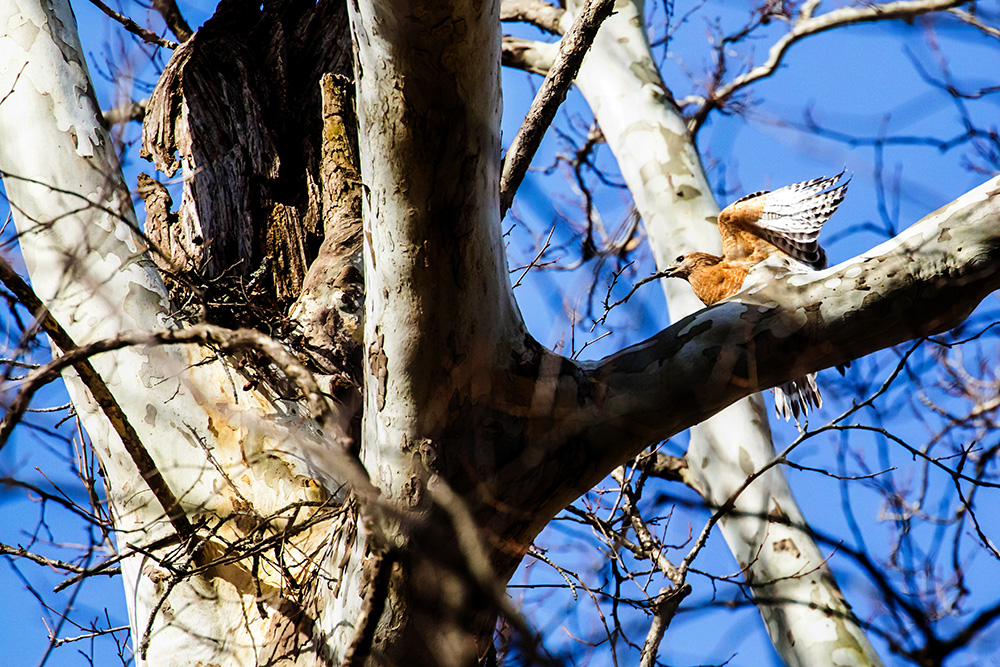
Ospreys also make nests primarily of sticks, although theirs are much easier to spot. They prefer open platforms with easy access, because they don’t maneuver as fluidly as other hawks. Osprey pairs usually make a nest that’s 2.5 feet wide and 3-6 inches deep in their first year together, and then add to it as time goes on. Eventually those nests can be 3-6 feet wide and 10-13 feet deep! I’d say the osprey parent below has been at this for a while.

Burrow Nests
These nests are sheltered areas in trees, the ground, or among rocks where birds can hide and incubate their eggs. Many of these birds dig the burrows with their beaks and feet. The classic burrow-dweller here in the U.S. is the burrowing owl, which nests directly in the ground. In the Western part of the country, they usually use holes previously dug by prairie dogs, tortoises, and other animals, but in Florida they typically dig their own. There’s not much ornamentation to these nests; the owls often line them with livestock manure, although researchers aren’t sure whether this is to attract prey like beetles or to signal to other owls that this burrow is occupied. Presumably it’s not just for the ambiance.

Barn owls have also been known to dig burrows in river banks, although they also build and use cavity nests in all sorts of places (including, yes, barns). Females regurgitate pellets of undigested fur and bones, shred them, and create a cup into which they lay eggs.

Mound Nests
Water-dwelling birds like flamingos and coots create mounds of mud, twigs, grass, and other vegetation in the water, which offers helpful protection from land-based predators. Common loons choose sites near the banks of lakes, with the male and female cooperating to build with dead plant material growing nearby. When the nest is finished, one loon climbs on top and molds the interior to the shape of its body.
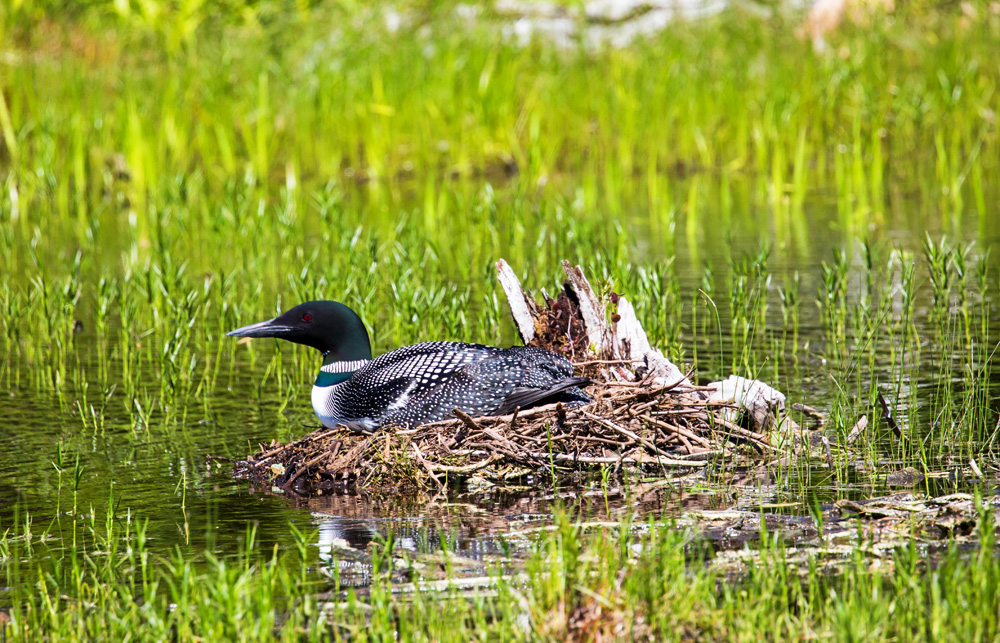
Ground or Scrape Nests
Finally, we have one of the simplest nests of all: a scrape. This type of nest involves a bird creating a depression in the ground that’s deep enough to keep eggs from rolling away. Locally, the killdeer is a noisy (I say this with love) shorebird that often chooses pockets of gravel directly by roadsides. It’s a good idea to keep an eye out for these birds in spring and summer, and make sure that if you see a killdeer sitting by a roadside you keep your distance (this is a heavily cropped photo!).
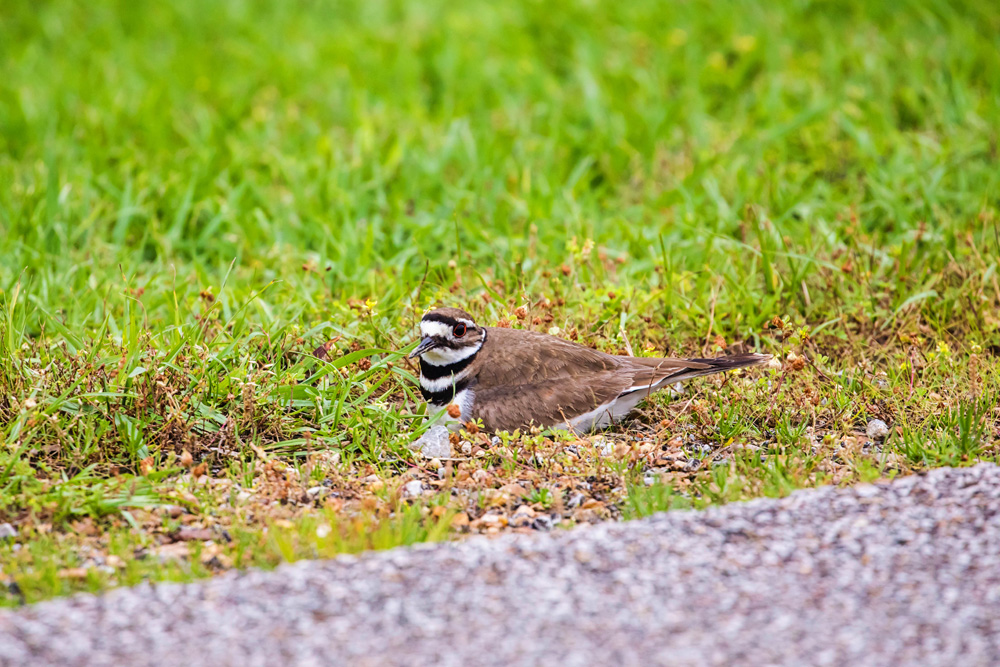
Some scrape nests get a little more complicated, and that’s where we’ll end today. Northern gannets are seabirds that build short pedestals on the windward sides of rocky cliffs (the better to assist them with takeoff). Males make a scrape, build up the sides with algae, grass, mud, and feathers, and paste it all together with poop. Resourceful!
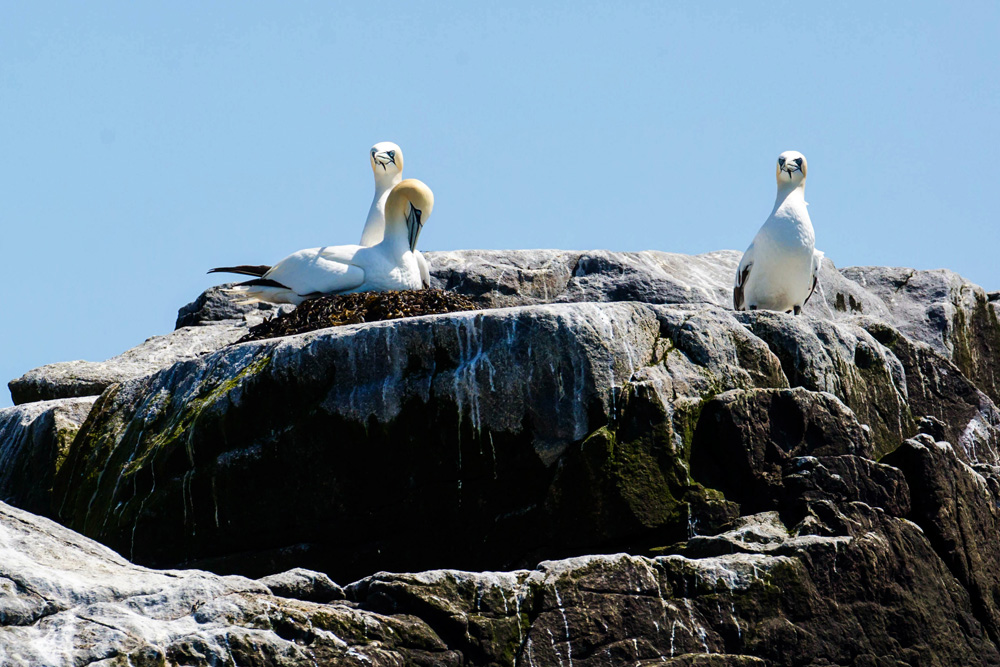
My favorite thing about gannets is that every time the pairs reunite at their nest site, the male and female greet each other by standing chest-to-chest while shaking their heads, tapping bills, bowing, and preening the other’s neck. This ritual reinforces their bond, and it seems to work–gannets are largely monogamous and keep the same partners as long as they both shall live.




